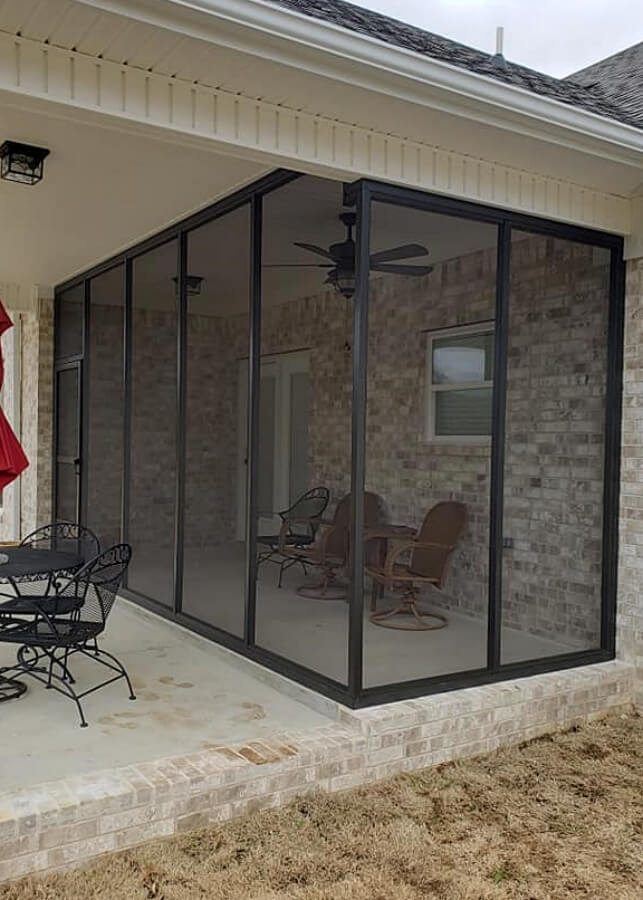Glass plays a vital role in modern architecture and interior design, but choosing the right type and thickness is essential for safety, performance, and functionality. Glass thickness and the type of glass – such as tempered glass – determine its strength, durability, and application suitability. For both residential and commercial spaces, understanding these factors is crucial to ensure long-lasting safety and aesthetic appeal. In this guide, we’ll explore why glass thickness matters, the advantages of tempered glass, and how these factors influence your projects.
What Is Glass Thickness and Why Does It Matter?
Glass thickness refers to the depth of a glass pane, typically measured in millimeters (mm) or inches. The thickness significantly impacts the glass’s strength, insulation properties, and safety, making it one of the most important considerations when selecting glass for a project.
Common Thickness Categories
Glass comes in various thicknesses, each suited for specific applications:
- 3-4mm: Thin and lightweight, this glass is often used for photo frames and small decorative panels.
- 5-6mm: A popular choice for standard residential windows, offering adequate insulation and light transmission.
- 8-10mm: Suitable for high-traffic areas like interior partitions, glass doors, and balustrades.
- 12mm or more: Frequently used for load-bearing applications, such as glass floors, heavy tabletops, or staircases.
Key Factors Determining Thickness
- Location: Exterior windows may require thicker glass to withstand wind pressure, while interior applications may only need thinner panes.
- Purpose: Glass used for structural purposes (e.g., railings) demands greater thickness and strength.
- Safety Standards: Many building codes dictate minimum glass thickness for certain applications to ensure safety.
What Is Tempered Glass and How Does It Work?
Tempered glass is a type of safety glass that undergoes a specialized heat treatment process to enhance its strength and durability. This process involves heating the glass to extreme temperatures and then cooling it rapidly, creating internal stress that makes it much stronger than ordinary glass.
The Science Behind Tempered Glass
The tempering process changes the glass’s molecular structure, increasing its tensile strength. When broken, tempered glass crumbles into small, rounded fragments instead of sharp shards, significantly reducing the risk of injury.
Benefits of Tempered Glass
- Safety: Shatter-resistant properties make it ideal for homes, offices, and public spaces.
- Strength: Up to five times stronger than standard annealed glass.
- Heat Resistance: Withstands higher temperatures, making it suitable for kitchens, fireplaces, and outdoor use.
- Durability: Its resistance to scratches and wear ensures a longer lifespan.
Applications of Glass Thickness and Tempered Glass
The combination of proper thickness and tempered glass enhances both safety and aesthetic value in various applications.
Residential Uses
- Windows: Thicker tempered glass provides superior insulation, soundproofing, and security.
- Shower Doors: Typically 6-10mm tempered glass, designed to resist moisture and impacts.
- Balustrades and Railings: Sturdy 10-12mm tempered glass ensures safety without obstructing views.
- Furniture: Tabletops and shelves made from tempered glass (8-12mm) are both durable and visually appealing.
Commercial and Industrial Uses
- Storefronts and display cases: Use tempered glass to protect merchandise while maintaining a sleek, modern appearance.
- Office partitions: Tempered glass in the 8-10mm range enhances privacy and sound control while allowing natural light to flow.
- Skylights and roof glazing: Thick tempered or laminated glass provides safety from overhead impacts.
- Glass doors: Ensures durability in high-traffic areas such as entrances and conference rooms.
How to Choose the Right Glass Thickness
Choosing the appropriate glass thickness depends on several considerations, including safety, aesthetic goals, and environmental factors.
Guidelines for Selecting Thickness
- Low-risk applications: Thin glass (3-4mm) works well for decorative uses like picture frames or cabinet doors.
- Moderate risk areas: Standard windows and doors benefit from 5-6mm glass for durability and light control.
- High-impact Zones: Areas prone to heavy use or environmental stress, like railings or storefronts, require 10-12mm tempered glass.
- Extreme weather conditions: Use laminated or tempered glass with thicker dimensions to withstand hurricanes or earthquakes.
Safety Standards for Tempered Glass
Tempered glass must meet rigorous safety standards to be suitable for residential, commercial, or industrial use. In many regions, building codes require tempered glass in high-risk areas such as:
- Bathroom installations (e.g., shower doors and mirrors).
- Staircase railings and balconies.
- Skylights and overhead glazing.
- Public spaces where safety is important.
FAQs: Glass Thickness and Tempered Glass
What is the difference between tempered glass and laminated glass?
Tempered glass is designed to shatter into small, safe pieces when broken, while laminated glass features a plastic interlayer that holds shards together, providing added security and soundproofing.
Can tempered glass be cut or resized?
No. Tempered glass cannot be altered after it has been tempered, as cutting or drilling compromises its structural integrity.
How do I know if my glass is tempered?
Look for a stamp in the corner indicating compliance with safety standards, such as “Tempered” or “Safety Glass.”
Why Glass Thickness and Tempered Glass Matter
Understanding the relationship between glass thickness and type ensures the best performance for your specific needs. Whether it’s the enhanced safety of tempered glass or the added durability of thicker panes, both factors contribute to a safer, more functional space.
Key Takeaways
Always match glass thickness to the application’s demands.
Use tempered glass in high-risk areas to prioritize safety.
Consider environmental factors such as wind loads or temperature fluctuations when choosing glass.
Trust Hiegel Glass for All Your Glass Needs
When it comes to glass installations, safety and quality are non-negotiable. Choosing the right thickness and type of glass can protect your property, enhance its aesthetics, and provide long-lasting durability.
For expert advice and premium glass solutions in Conway and the surrounding areas, turn to Hiegel Glass. Whether you need tempered glass for your home or custom thickness for a commercial project, our team ensures exceptional service and results. Contact us today at (501) 327-7759 to learn more about how we can help make your space safer and more beautiful with tailored glass solutions.

Contact Us for a Free Inspection and Estimate
Single pane, double pane, standard, or custom – no job is too big or too small for our team! Our friendly window and glass professionals will happily come to your home to inspect your windows, take professional measurements, and provide you with an estimate of what it will cost to replace your window – or every window in your house! Contact us today to schedule your free inspection!
